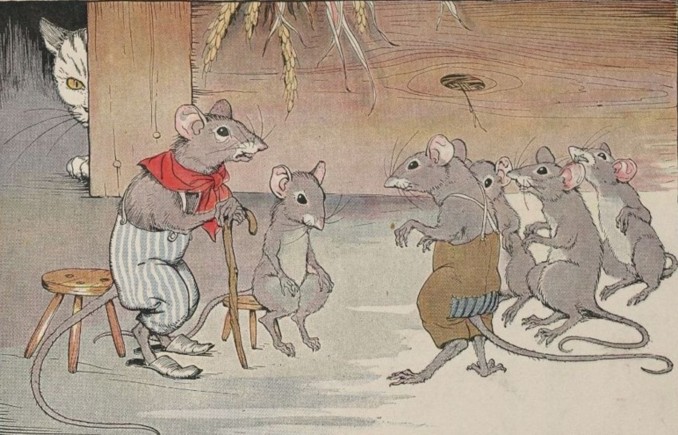Richmond Read-along 91

Welcome back to the Richmond Read-along! Today we are reading one of Aesop’s fables. Aesop’s fables are incredibly well-known, and many people are able to quote at least a couple of the best known ones. They are very short fragmentary tales with a moral of some kind to them. In some collections of the stories, the moral is stated explicitly; in others it is left to be divined by the reader; still others state the moral for some tales but not for others. Although they can be considered dry and overly didactic, the tales can be humorous and insightful. It often depends on the translation or retelliing as to how entertaining or embellished the tales are.
Aesop himself is a figure shrouded in mystery. Many sources, including editions of his books and various chroniclers in Ancient Greece, claim him to be a real person and attempt to provide a myriad of conflicting biographical details. In all these accounts, Aesop is a talented storyteller who charms and enlightens with his brilliant fables. However, scholarly opinion now leans towards “Aesop” being a legendary figure to whom common tales of the time were attributed. At the least, it seems likely that “Aesop’s fables” were not written by Aesop himself.
The Council of Mice
Once upon a time all the mice met for a council, in order to discuss the issue of the cat who had been proving a very great threat to them. After lengthy discussion, one mouse announced that he had hit upon a plan to keep them safe. If the council saw fit to attach a bell to the collar of the cat, then all mice would know when it was near by the sound of the bell, and thus have time to make their escape. This suggestion was met with much enthusiasm, until another mouse stood up. “But which of us,” he asked, “is to attach the bell?”
Many collections of Aesop’s fables can be found online; for instance this one on Project Gutenberg. You can read more about the legends surrounding the figure of Aesop at the Encyclopaedia Britannica.
Join us tomorrow for the next Richmond Read-along!
